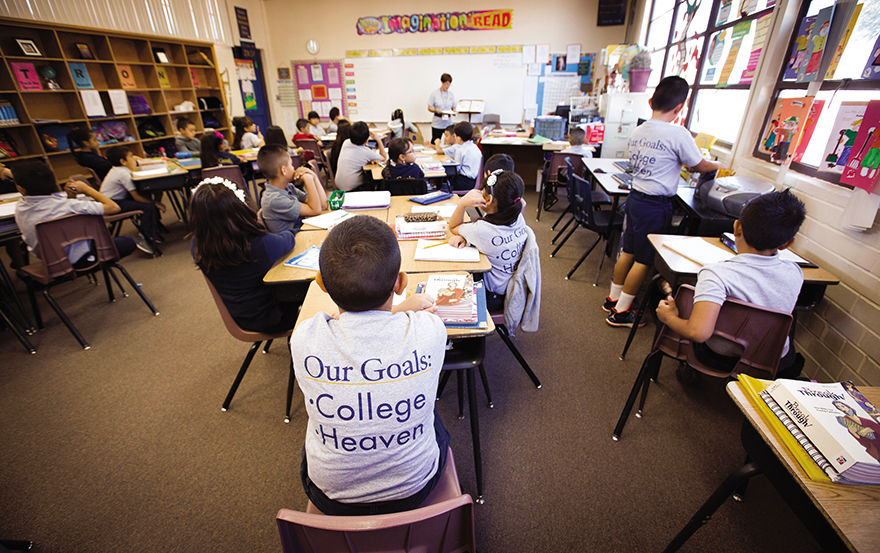When Thomas Wolfe wrote his Great American Novel, “You Can’t Go Home Again,” he could have been talking about Catholic education.
We have come a long way from packed classrooms full of baby boomers being taught by tough nuns with ironclad wills as sharp as the creases on their habits, to what now, in many aspects, resemble lower-tier private schools. It is easy for people of a certain geriatric orientation to hark back to bygone days when things were so much different, and in the blur of the rearview mirror, so much better.
Pope Francis understands this penchant well and advises against it. “…We cannot be nostalgic for the past. Rather, we must make careful note of the changes that have affected both the family and schools and renew our commitment for a constructive collaboration for the good of children and young people.”
Parents naturally like to look forward, as in thinking their children will have it better than they did. In some respect my children do. In other ways, especially as it relates to Catholic education, my parents had it a whole lot easier than my wife and I ever did. And it’s more than just the cost. The world that surrounds Catholic schools is more coarse, predatory and openly hostile to virtue than it has ever been.
What used to come to homes in brown wrappers is now posted on billboards all over Los Angeles. If we think of Catholic schools as fortresses against the baser elements of the culture at large we are mistaken. Technology and familiar breakdown have brought the wolves inside the gates.
The Church has always maintained parents are the first and most important teachers of their children, so the family disruption so rife in our culture is another pressure point laid at the feet of many a Catholic educator. Popular culture, never a paragon of virtue, is now unshackled from any kind of restraints, and the ensuing mixed messaging children get between school and TV set keeps engaged parents hopping like those guys who used to spin plates on ancient variety shows.
The warning Pope Paul VI gave us in “Humana Vitae” has come to pass in the form of broken families and #MeToo lapel pins. This is the environment in which Catholic schools with limited resources exist — and thrive — graduating students at higher levels than their secular counterparts and with students who consistently outperform their public-school peers in classroom subjects.
And Catholic schools do all of this in the face of what most people would perceive as a major crisis. According to the National Catholic Education Association, Catholic schools succeed at a time when less than 3 percent of Catholic school faculty are religious or clergy.
The cliché of the ruler-wielding nun running the show like a Marine Corps gunnery sergeant has vaporized into mythology. In its stead is a corps of dedicated lay teachers filling the breach, and thank God for them.
That 3 percent figure may indeed sound like a crisis if we forget the Church always moves and thinks in increments of centuries the way the popular culture thinks in microseconds; and if we forget the Church was born in crisis on a hill outside the walls of Jerusalem. That should give that 3 percent figure a little perspective.
And although the past may not have the answers, in many respects it may give us a hint at the future. In the last century and a half, God saw fit to bring legions of religious and clergy from a troubled country like Ireland to our shores, and those dedicated souls built the Catholic school system in America.
Many of those same people also traveled to Africa in the last century and spread the good news of salvation and planted seeds of faith. The fruit of those seeds is ripening rapidly, as seen in many priestly and religious vocations across a very troubled continent.
Who is to say that the next wave of missionaries won’t be going to Africa, but instead be coming from Africa. Imagine a great wave of religious men and women, on fire for the Lord, ready to work out the missionary mission of the Church side by side with a dedicated lay staff.
We may not be coming “home” again, as Thomas Wolfe lamented, but it might show how home is where the faith is … inside and outside the classroom.

